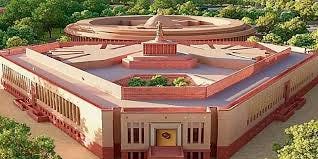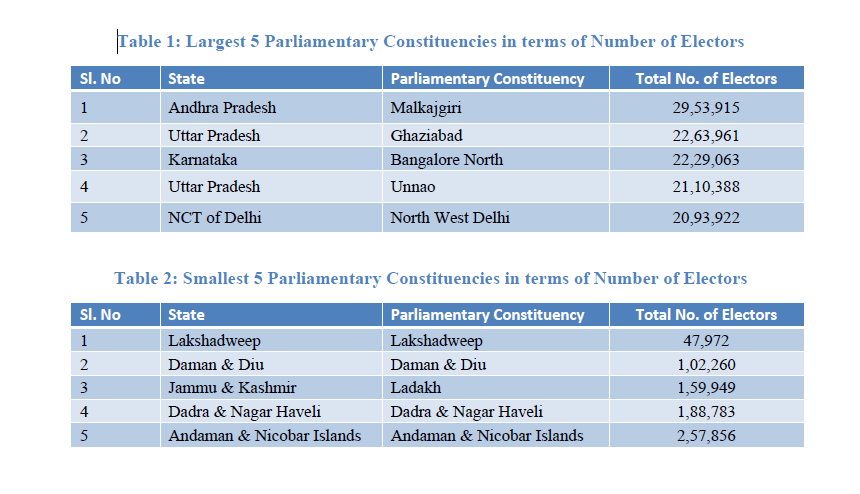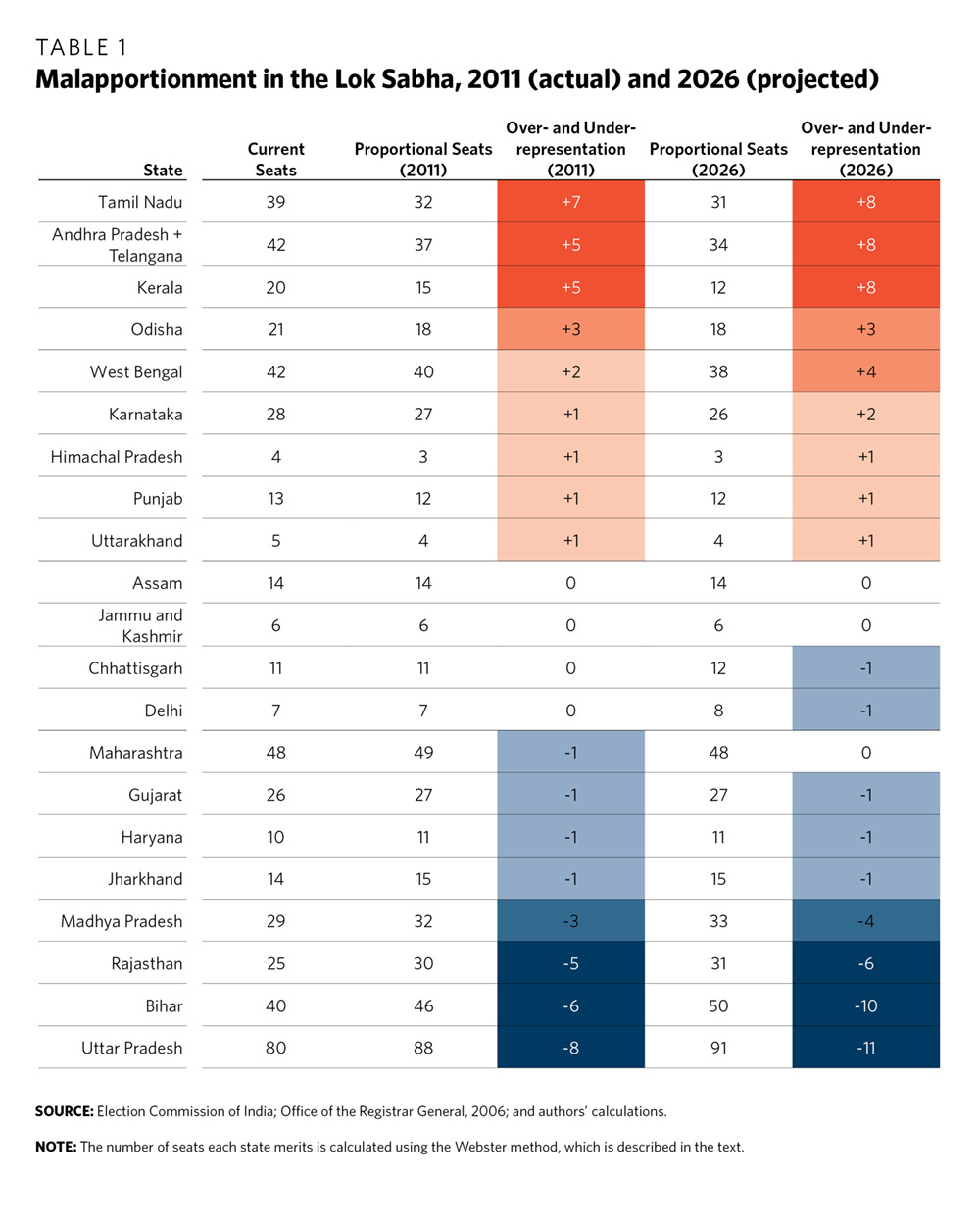Delimitation 2026 – Opportunity or Time Bomb?
The new Parliament Building has an 880-seat Lok Sabha. But the Lok Sabha has only 543 seats. Why so?
This has generated a lot of speculation. The official explanation is, of course, that the old Parliament building used to struggle to accommodate all members in a joint session of both houses, hence the change.
However, many feel that the reason is delimitation.
By now, I am sure we all know what the delimitation exercise is all about and, if it is done, what changes are expected. But a recap is well in order.
When India started as a republic, it adopted proportional representation. This means each elected member of the Lok Sabha or a State Assembly will be representing a finite number of citizens. If we keep the state assemblies and only look at the Lok Sabha in the beginning, the number of Lok Sabha seats for each state was decided ensuring each representative of the Lok Sabha (Member of Parliament) represents roughly the same number of people across the country.
However, exceptions were made for small states or Union Territories, which were allocated at least one seat even if they did not pass the population hurdle.
But the founders of the republic were also cognizant that the population would change over the period, and if the seats remain the same then soon we may have a significant increase in the number represented by each member (the assumption was population increase then, may not be the same today).
Also, states may have different trajectories both in boundaries as well populations. To address this, a delimitation was proposed every 10 years based on the most recent census.
Delimitation is an exercise to revisit the number of seats, and if necessary increase, decrease, or rearrange the boundaries. This is done by the Delimitation Commission, and it is a constitutional mandate.
So far we had three delimitations exercised. The first one was in 1952 based on the 1951 census, with Lok Sabha having 494 seats. This is the first election in independent India.
This was followed by two more, in 1963 based on the 1961 census (with, Lok Sabha seats increased to 522), and then in 1973 based on the 1971 census (with Lok Sabha seats becoming 543).
1976 at the peak of the family planning campaign, it was decided to postpone it by 25 years so that the impact on the population would be felt in a generation, and then a more balanced exercise could be done. In 2001 again it was postponed by 25 years till 2026.
So today what we have for Lok Sabha and Rajya Sabha are the numbers from 1973, 543, and 250 respectively.
Much has happened since then. The population has taken different trajectories across the states. But the contrast is most telling between the Southern states and the rest of the country. While the population of Tamil Nadu, Karnataka, Kerala, Telangana, Andhra Pradesh, and Puducherry has long stabilized, it has increased substantially elsewhere, especially in the Hindi belt.
As a result, the representations have vastly diverged across the country. In Tamil Nadu, an MP represents an average of 18 Lakh voters, whereas it is 30 Lakhs in Uttar Pradesh. That is a 40% divergence, and in no way good for a democracy.
However, while this is an important issue, the bigger issue is the representation itself. With an average MP representing 15L people, the number contrasts with data from across the world. Here is a snapshot from different regions:
Global average 1.5L people per representative
Asia Pacific 3.13L people per representative
Europe 63K people per representative
Canada has 90K people per representative.
Now even a 63K is a challenging number given estimates that an average person meets around 10,000 people in their entire life. Studies have shown that we can build a community with a maximum of 150 members. But these numbers pale in comparison to that of India.
Here we need to note that there are some exceptions under the exception of at least one representative for each of the state or union territory, irrespective of the population. So Lakshadweep has one MP for 65K people, and Damand & Diu has one for 111K population. But these are real exceptions.
What happens in 2026? There can be two scenarios.
The first one is easy, but not ideal. Just like in the last two times, the government can well kick the can down the road, maybe for another 25 years.
The status quo remains, and we don’t even notice anything. But there are two problems. We turn blind to the fundamental principles of proportional representation and also do not touch on the disproportionate number of citizens represented by each representative.
The other option is delimitation. The first question then is, how many seats for Lok Sabha and Rajya Sabha?
Let us be clear, there is no way to know this number. However, based on assumptions and past data, researchers have come up with estimates of the following broad scenarios:
The number of seats in Lok Sabha will increase from 543 to 880.
The number of seats in the Rajya Sabha will increase from 250 to 385.
Two dependencies need a mention here:
We have not done a census for 2021, and it is a prerequisite for delimitation. Given we are not even discussing it, it looks certain that delimitation will not happen in 2026.
Parliament has passed a bill for 33% women representation, and it will be implemented after the next delimitation.
With the projected number of 888 seats, the average representation will come down from 15 Lakhs to 12 Lakhs, and it is not much of a relief. But the much bigger implication will be the seats of the states.
We discussed before that how South India has led the country in population control, and the rest of India, especially North India is on the other end of the axis. And if we implement the delimitation in true spirits, state seats will change.
Seats in Punjab, Tamil Nadu, Andhra Pradesh, Telangana, Kerala, West Bengal, and Odisha will decrease. On the other hand, the Hindi belt will gain, for example, UP seats are projected to go up from 80 to 91.
This model has many problems. Let us list them:
1. Will we end up punishing the Southern states for doing a better job of implementing family planning? Or are we going to reward the states who have done a bad job here? This will also be poor signaling.
2. Seats in Parliament are a reflection of a state's bargaining power at the federal level. An increase or decrease of seats of a state or UT will have implications for these powers.
3. This will potentially allocate around 550 of the 880 seats to the Hindi belt. So a political party or group of parties who do exceeding well in this region can potentially rule India, without caring much about the opinion of the rest of the nation.
4. Already Southern states play a role in transferring income to poorer states, mainly in the North. If there is a loss of political power by these states, the financial divide may aggravate into deeper fissures.
5. On the top, with an average of 12 Lakh represented by one MP, the core issue of disconnect will remain. Just for perspective, we will still be four times the Asia Pacific average of representation.
So what is to be done? People are broadly talking of the following options:
1. Push is down the road, especially given the politically polarized time we are in, and the historically low credibility of the political class in general. But will things change in the future, we don’t know. And it certainly does not address the disproportionate representation issue.
2. Increase the number of LS members proportionately. This means we target a Lok Sabha number, say 880, and increase the number of seats of each state in the same proportion that they are at. This will make a marginal improvement in representation (the average of 12 Lakh citizens per constituency instead of 15 Lakhs), but the state representation will not change. And yes, it still violated the proportional representation principle.
3. Bite the bullet and go ahead with the delimitation in the true spirits. Yes, it will be a tough job to do and may have dire consequences. In some scenarios, the concentration of political power with the Hindi belt may be less of the expected evil, for it may even threaten the integrity of the union.
4. Keep the Lok Sabha intact (either at 543 seats, or 880, or some other increase numbers in the same proportion), but dramatically increase the state assembly strengths, and make sweeping changes to make real power transfer to the local levels. The Constitution proposes significant devolution of power to the Panchayats and other Local Bodies, but the reality on the ground is different. |
If power devolution happens at the local level, the need for representation at the federal level comes down. The job of an MP or an MLA is to make legislation, but they are now all busy grabbing local power while keeping the local governments defunct. This will be a welcome change.
5. Make India deeply federated, like most of the advanced economies of the world. Yes, the Constitution of India is centralizing, and that is because of the concerns about capacity and stability in the early days. But now things have changed a lot, states have matured significantly in governance, and for sure politics has also moved.
If we look at models like the US where the Federal government largely manages Internal Security, External Affairs, Finance, and Defence, and pretty much everything is left to the states, we can find a middle ground where states may not be so concerned about their representation at the Lok Sabha.
Today many feel that as it is delimitation will punish the states that did a good job of family planning and reward those that did not. Add to that the transfer of revenue from richer states to the poorer based on the recommendations of the Finance Commissions, and it is largely tagged to the population numbers. So for people of the better-performing states, it is a double whammy and can create lots of angst.
That may be dangerous, and people are never more humiliated than when they feel they were not heard. As Stephen Covey said, with people slow is fast.
I hope that the Delimitation exercise will be debated with all the stakeholders, and a sane decision will be taken. And for that, we need evolved leadership at every level. I suspect we don’t have it, but I will be happy to be proven wrong.
References:
https://en.wikipedia.org/wiki/Delimitation_Commission_of_India#:~:text
https://theleaflet.in/the-north-versus-south-delimitation-challenge-to-indian-federalism/
https://www.theindiaforum.in/politics/indias-delimitation-dilemma-challenges-and-consequences
https://carnegieendowment.org/research/2019/03/indias-emerging-crisis-of-representation?lang=en







